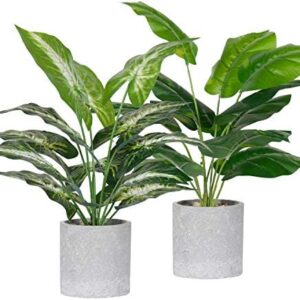Having an indoor garden is a great way to bring the outdoors inside and create a beautiful and calming environment in your living space. Whether you live in a small apartment or a spacious house, you can create a thriving indoor garden that adds life and color to your home.
The first step to creating a successful indoor garden is to assess your living space and determine the best location for your plants. Consider the amount of natural light that enters the room, as well as the temperature and humidity levels. Most plants require at least six hours of sunlight per day, so choose a location near a window that receives plenty of natural light.
Next, decide what type of plants you want to grow in your indoor garden. Some popular options for indoor gardens include succulents, herbs, and tropical plants. If you are new to gardening, it is best to start with low-maintenance plants that are easy to care for. Succulents are a great choice for beginners, as they require minimal watering and can thrive in a variety of indoor environments.
Once you have chosen your plants, it is important to select the right containers for them. Choose pots that have drainage holes to prevent overwatering and ensure proper drainage. You can also get creative and use unique containers such as mason jars, teacups, or old tin cans to add visual interest to your indoor garden.
When it comes to watering your indoor plants, it is important to water them consistently but not excessively. Overwatering is a common mistake that can lead to root rot and other issues. The best way to determine when your plants need water is to check the soil moisture level with your finger. If the top inch of soil feels dry, it is time to water your plants.
In addition to watering, it is important to fertilize your indoor plants regularly to ensure they receive the nutrients they need to thrive. There are many different types of plant fertilizers available, so choose one that is specifically designed for the type of plants you are growing. Follow the instructions on the fertilizer package carefully to avoid over-fertilizing your plants.
In addition to water and nutrients, indoor plants also require proper airflow and humidity levels to thrive. To improve air circulation around your plants, consider using a small fan or opening a window occasionally. If the air in your home is dry, you can increase humidity levels by placing a small humidifier near your plants or misting them with water regularly.
Another important aspect of maintaining a thriving indoor garden is to regularly monitor your plants for signs of pests or diseases. Common indoor plant pests include spider mites, aphids, and mealybugs. If you notice any signs of pest infestation, such as yellowing leaves or sticky residue on plant surfaces, take action immediately to prevent further damage.
Finally, remember to regularly prune and trim your indoor plants to promote healthy growth and prevent overcrowding. Remove any dead or yellowing leaves, as well as any stems or branches that are growing in the wrong direction. Regular pruning will help your plants maintain their shape and encourage new growth.
In conclusion, creating a thriving indoor garden in any living space is possible with the right combination of light, water, nutrients, and care. By selecting the right plants, containers, and growing conditions, you can enjoy the beauty and benefits of an indoor garden year-round. So roll up your sleeves, get your hands dirty, and start growing your own little piece of nature indoors today.






